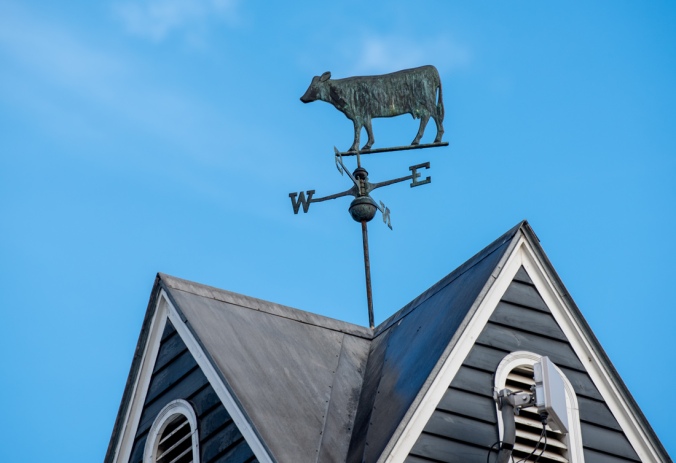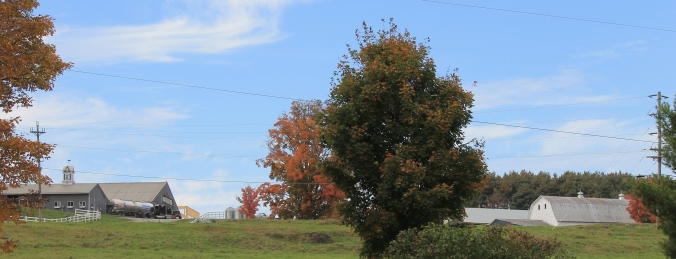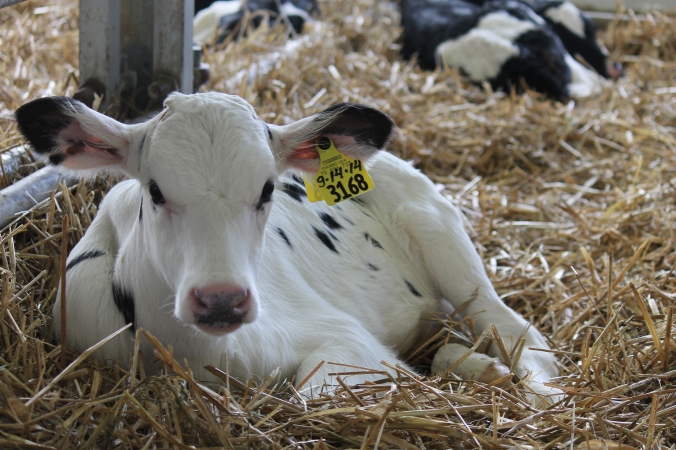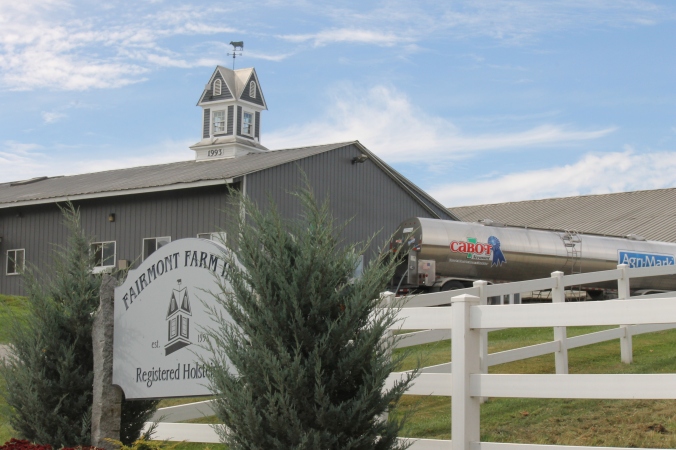
In response to the opinion piece “Ellis: Big dairy is not essential” published in the June 4 issue of the Times Argus…thank you. I thank the author because he made some good points: dairy farming is different than it used to be, it is being challenged to improve environmentally, in respect to animal welfare, and in respect to profitability, it does have a broken system for milk pricing, quite frankly…the dairy industry is struggling right now.
Yet, the argument Ellis makes that large farms are unessential is simply not true…especially in this time of crisis when more people than ever are food insecure. Ellis is ignoring that dairy farmers of all sizes have stepped up to the challenges they are facing.

The proposal Ellis referenced to send $50 million to Vermont dairy farmers and processors, is money specifically reserved for losses incurred due to the coronavirus pandemic. Dairy farmers had a difficult last few years, but 2020 projections were strong. Any industry that immediately lost 15% of its market due to a halt on exports while simultaneously losing 100% of the domestic food service market would struggle. That is not something anyone could predict. These funds are supporting farmers with COVID-19 losses specifically, not subsidizing a dying industry.

In Vermont all dairy farmers, large and small, are permitted by the Vermont Agency of Agriculture and follow strict Required Agricultural Practices (RAPs). In this years Clean Water Initiative annual report, it was concluded that agriculture is doing the work. Agriculture was asked to be approximately 60% of the solution to reducing phosphorus in Lake Champlain, and the report found agriculture came through as more than 90% of the solution. Farmers take their stewardship seriously, the manure and fertilizers applied to our fields are applied to help our crops grow. Manure is liquid gold; we want to protect the nutrients that we put on the field to make sure they are being used by our crops. Anything that is not being utilized by our crops is wasted money, you can be sure farmers are doing everything they can to make sure that liquid gold is not wasted. Farmers in good times and bad, are making significant investments to further improve their environmental impact and water quality. Our dairy farm, Fairmont Farm, has heavily invested in technology and practices that are good for water quality, soil health and mitigate the effects of climate change. Investments include, our no-till planting system, our manure management system to reduce soil compaction, manure injection technology, manure storage ensuring spreading only at ideal times, and high and low flow systems to manage stormwater. We have planted vegetative buffers along waterways, and we have worked with the Vermont Land Trust on multiple projects to ensure a future for productive land to stay in agriculture. We crop over 3,600 acres of land in Vermont and own more than 1,600 acres of conserved land. The fact is, there is a need for ALL agriculture. This is too much land to protect from development if relying on small diversified farms alone. The Vermont we love, the Vermont that has a thriving tourist industry, has beautifully maintained open landscapes. This is thanks to Vermont farmers of all shapes and sizes. Currently, Vermont homes are being purchased from people out of state sight unseen, development of farmland is something we should all be worried about. The large versus small farm fight is not worth having. All dairy farmers have more in common than they have differences.

Dairy farmers across the U.S. follow rules under the Farmers Assuring Responsible Management (FARM) program. This program specifically outlines protocols put together by a panel of professionals, including vets, in relation to animal welfare on the farm. Our “confinement systems” as mentioned by Ellis, include temperature control, fans, sprinklers, cool and clean sand beds, plentiful water, and food just a short walk away, fly control, scratching posts. These cows are worked with, at least three times a day, to make sure they are happy and healthy.

The outdated federal order milk pricing system has been an issue for dairy farmers for decades. Across the country, cooperatives are working on their own supply management programs to better control supply and demand. Our own cooperative, Agri-Mark, put a new plan in place January 1st of this year. When the pandemic hit, there had not been enough time to see the benefits of a brand-new program that took a year to plan and implement. It is no small task to create a program that protects all farmers in a co-op while providing fair treatment and equal opportunity for all.

You would like a diversified food system that feeds Vermonters during the pandemic and beyond? We do too. In fact, many dairy farmers have stepped up in their communities and offered local beef for sale, many have other livestock species as well, my farm included. Dairy farmers work hard to provide a quality product loaded with nutrients for families in Vermont and beyond.

Milk is the most complete food and provides 9 essential nutrients. Retail data shows that 94% of Americans have dairy milk in their fridge – hardly a product that is going away. This pandemic has driven demand for fluid milk and retail sales are record breaking right now. Unfortunately, it is the lack of food service and the huge hit to our export market that created an oversupply of dairy. Agri-Mark has about 160 of the 635 Vermont family dairy farms, as an Agri-Mark member, I can assure you our milk goes just a few miles down the road to the Cabot plant to be made into Cabot products. Vermont dairy farms contribute $2.2 billion to our Vermont economy. Our farm has 35 full time employees. That is 35 families we are supporting. We keep much of our business and money local, supporting other nearby businesses. We have hosted Vermont Breakfast on the Farm, welcoming 1,200 guests to a free breakfast and farm tour, we have participated in the last several Cabot Open Farm Sundays, again providing a fun and free family event, we even host a Life on the Farm Summer camp, along with many school tours. We also have miles upon miles of public trails on our land. This is hardly doing “little to nothing in return for the public,” as Ellis claimed of large Vermont dairy farms.

The current pandemic we are facing is a wake-up call, it has forced everyone to change their mindset as well as the way we go about normal day to day activities including sourcing our food. Please know that it is because of the farmers that the grocery shelves have remained stocked, we showed up each day to take care of our animals, our land, and produce food for your family. While I know some things will change because of this pandemic, I know our dairy farmers will not change their mission…to keep working to “build a food system that feeds us all.”
Signed,
Clara Ayer of Fairmont Farm






 This year we are making some upgrades to our crop record keeping. We currently manage about
This year we are making some upgrades to our crop record keeping. We currently manage about 









